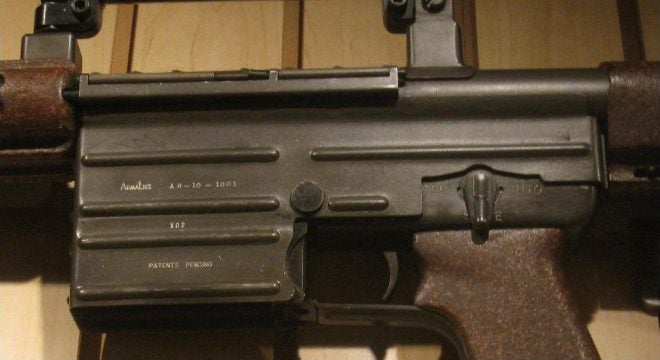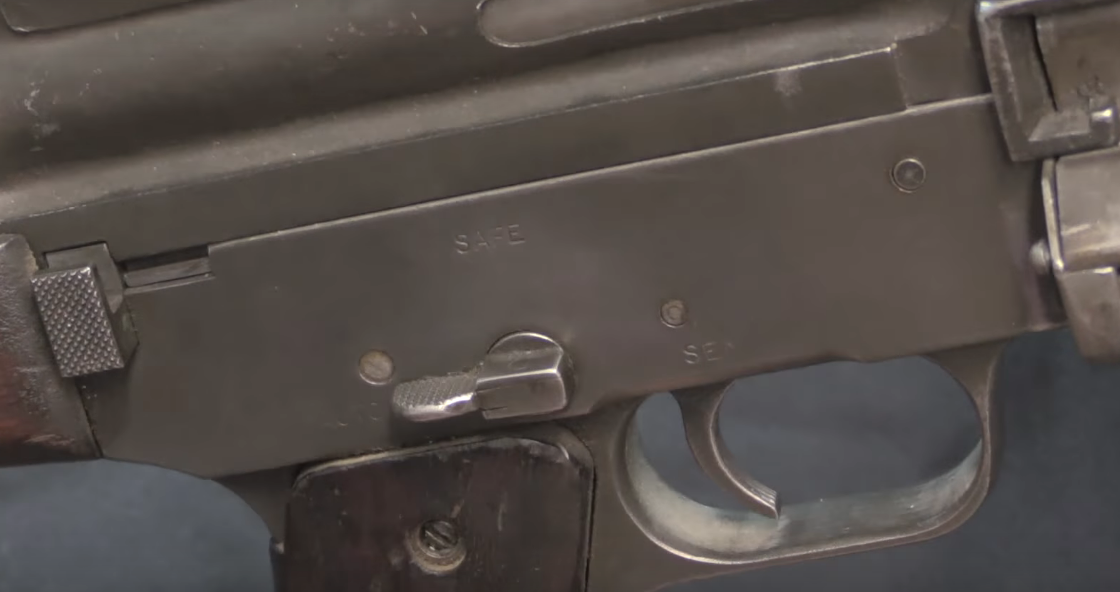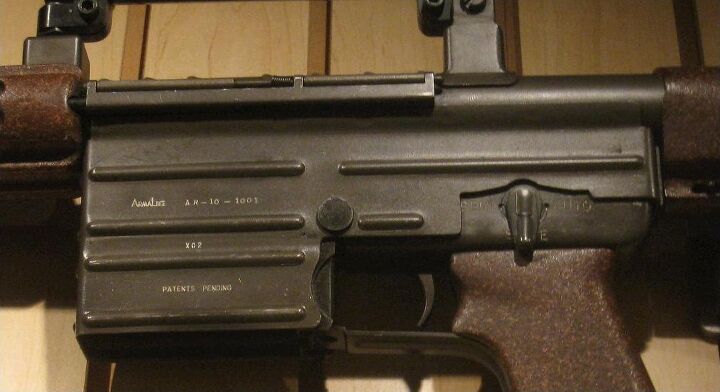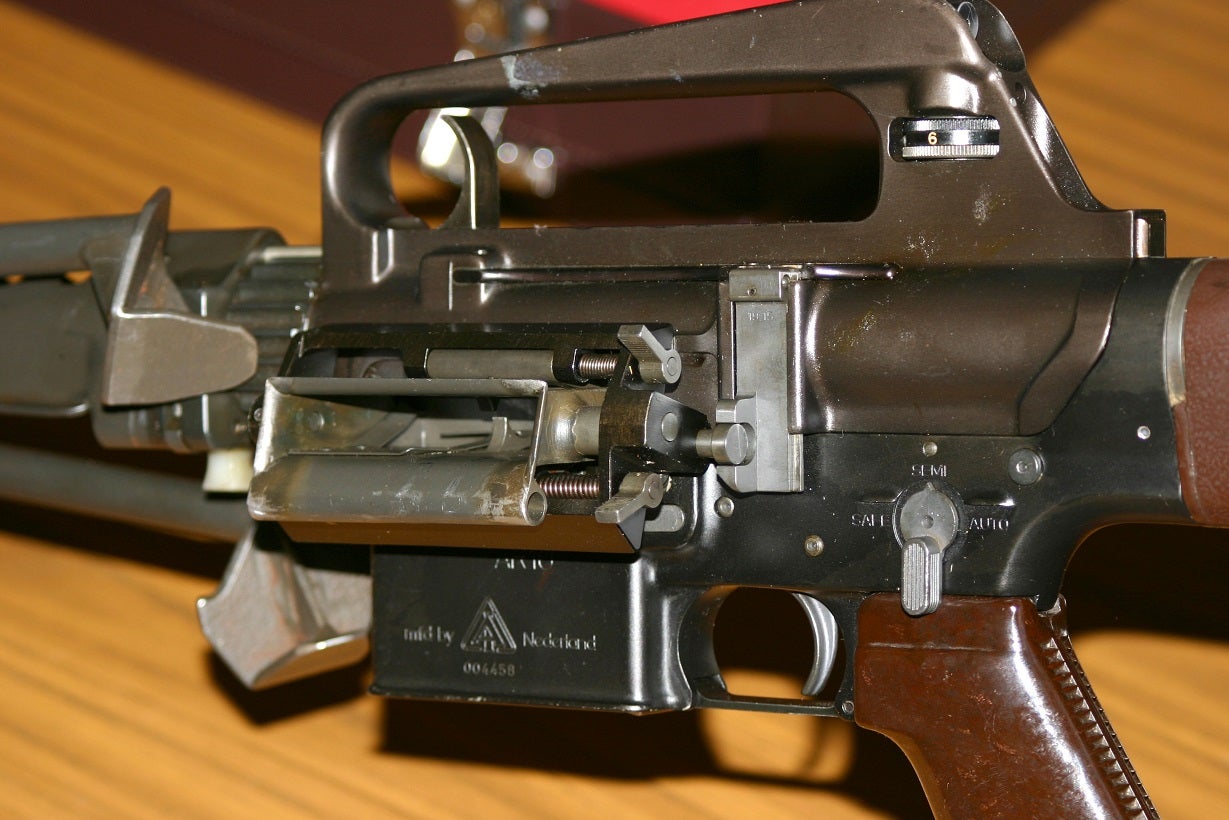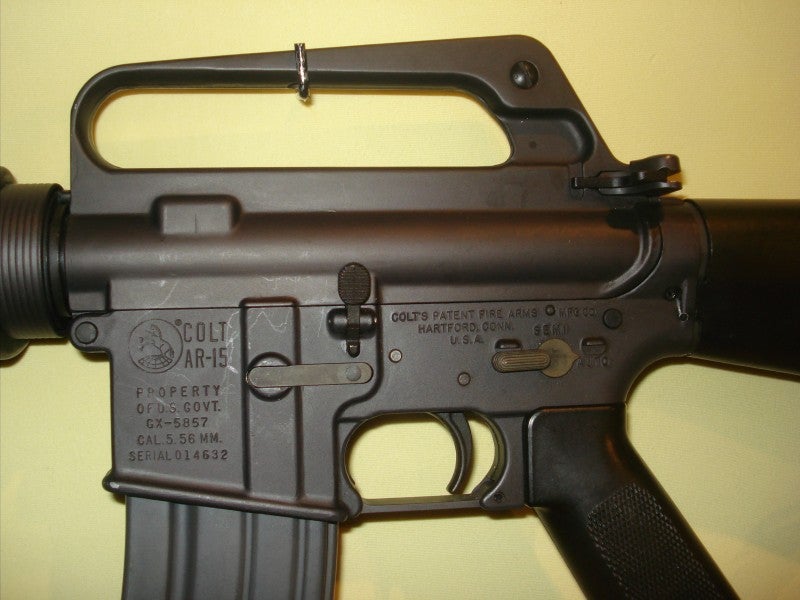The AR-15-style combined safety/selector thumb lever has become a hallmark of modern assault rifle and carbine design, proving to be an ergonomic and simple design for fire control management. However, it wasn’t always that way. The AR-15’s selector lever goes all the way back to the Johnson Light Machine Gun‘s selector, which was mounted on the right side of the gun, with “AUTO” at the rear, “SAFE” at the vertical, and “SEMI” in the forward positions. In the Johnson, the current setting is indicated by the checkered end of the selector itself, and in the very earliest AR-10 prototypes this design was retained, even though by this point the lever had been moved to the left side of the gun. By the production AR-10s, though, the selector markings were flipped to the opposite side, and indicated by a pointer on the selector, opposite the lever, which remains today. However, as Ian of Forgotten Weapons explains below, the actual positions of the selector were retained from the Johnson LMG all the way through the initial development of the AR-15:
The progression of Armalite safety designs, Johnson LMG, AR-10 X02, AI belt-fed AR-10 on production lower, AR-15 00001, current AR-15:
One thing that’s worth remembering about the development of safety/selectors during this time period (1940s-1950s) is that in many cases the selector function was considered a kind of “convertability”, and not something that necessarily needed to be accomplished quickly. Perhaps the most extreme example of this was the M14, where this philosophy was taken so literally that rifles destined for the regular rifle role (as opposed to the squad support weapon role) came equipped with no selector levers at all, and could function only in the semi-auto mode. Only the rifles used by the automatic riflemen would actually have these selectors installed, illustrating how thinkers at the time considered this functionality to be a kind of “modularity”, rather than additional capability within the infantry rifle itself.
Both the modern AR-15 and AK rifles helped bring the modern perspective to term. The AR-15, with its very natural “safe-semi-full” selector positions, and the AK as well. The latter case is often misunderstood, and is therefore worth some additional coverage. The pop culture interpretation of the Kalashnikov-style “safe-auto-semi” selector is that this denotes the primary and secondary functions of the rifle itself: Machine gun first, semi-auto rifle second. There does not seem to be any evidence that this was the actual intent of the safety desin, which appears to be a direct product of Kalashnikov’s effort to dramatically simplify his earlier desigs.
The previous Kalashnikov assault rifles, sometimes collectivey called “AK-46”, used separate safety and selector levers, which brought the added flexibility of being able to bring the rifle off safe and directly into either the semi or fully automatic fire mode. During development, the Soviet rifle board pressured Kalashnikov (and presumably the other designers in the competition as well) into simplifying and ruggedizing his design, which led him to combining the functions of the selector and safety with the Browning-style lever into a package that was rugged and easy to use in the cold.
 Your Privacy Choices
Your Privacy Choices
